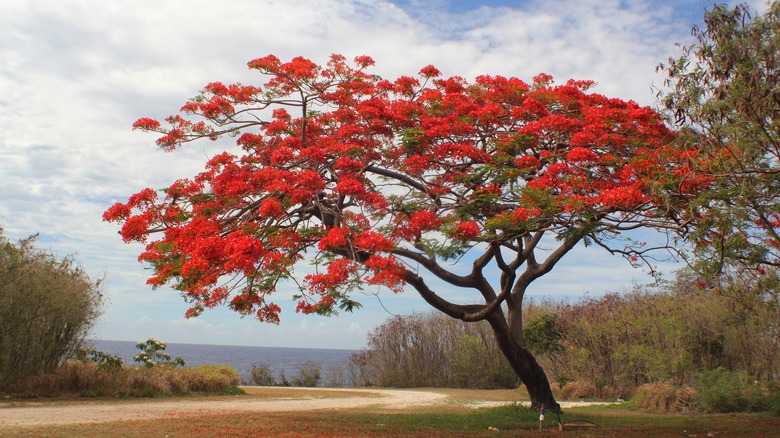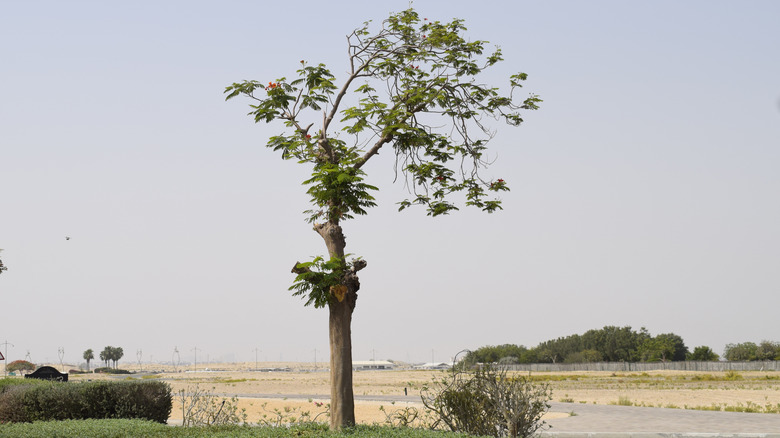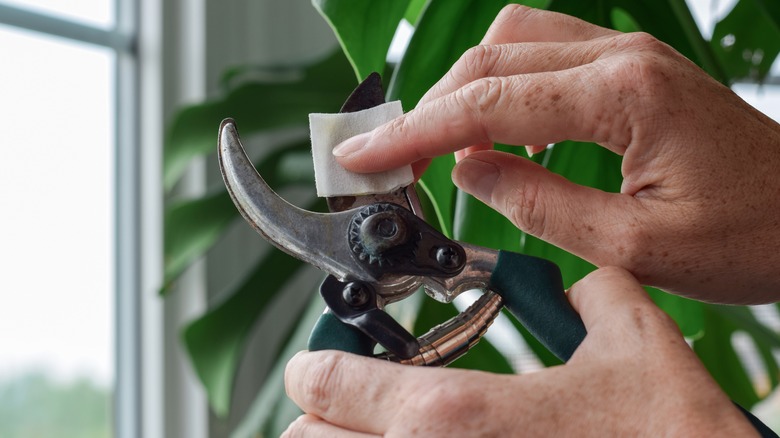The Biggest Mistake To Avoid When Growing A Royal Poinciana Tree
The stunning royal poinciana — also known as the flame tree — is a large flowering tree only grown in the southernmost parts of the United States (namely, Florida and South Texas). If you happen to reside in one of these areas, you may have considered attempting to grow one of these stunning trees that will add a pop of color to your yard. Or, maybe you've already planted one and now find yourself struggling to figure out where you're going wrong when it doesn't thrive like the ones you've seen elsewhere.
When it comes to growing this charming Madagascan tree, there is one common mistake that can majorly interfere with its health and survival: over-pruning. While some types of trees have no problem compartmentalizing (a tree's version of healing) after large cuts have been made to it, the royal poinciana is not one of these healers. Consider this your guide to understanding the risks of aggressive pruning and learning how to gently prune your flame tree in a manner that will enable it to thrive for decades to come.
Aggressive pruning: royal poinciana's archnemesis
Large-diameter cuts in a royal poinciana will never fully heal. Instead, they will remain a long-term entry point for fungus, which will lead to fungal decay. Over time, this decay will spread through the tree like an infection. Even though your royal poinciana may still look presentable on the outside, this interior fungal infection will weaken its structure to the point where it may eventually split open and collapse.
When a tree is injured — including by cuts made during trimming or pruning — it may never truly heal from the wound, but some species are better at compartmentalizing. When a tree compartmentalizes an injury, it produces specialized chemicals and cells that effectively wall off the injury and any decay surrounding it, preventing potential fungal infections from spreading. Unfortunately, royal poinciana is not an efficient compartmentalizer. This means that any large cuts made while pruning will open the tree up to widespread fungal decay.
How to properly prune a royal poinciana
While making large cuts during aggressive pruning can severely hinder the health of a royal poinciana tree, skipping pruning altogether will also harm the tree. This is due to the fact that its branches have a tendency to snap in the wind, creating many small wounds. Owners of flame trees must learn how to prune them gently and adequately in order to strike the perfect balance that will enable them to thrive.
The most important rule for pruning a royal poinciana tree is never to cut away more than one-third of the tree's growth. First, trim any branches that appear dead or damaged. Then, cut back any signs of co-dominant trunks to ensure a single dominant trunk for strong and symmetrical growth. Finally, lightly trim the tree's branches to create your preferred size and shape. Cuts do not need to be sealed with pruning paint or similar products; this is a gardening myth you need to stop believing. Always be sure to clean and disinfect your pruning tools before you begin in order to reduce the chance of introducing fungus to your tree.


